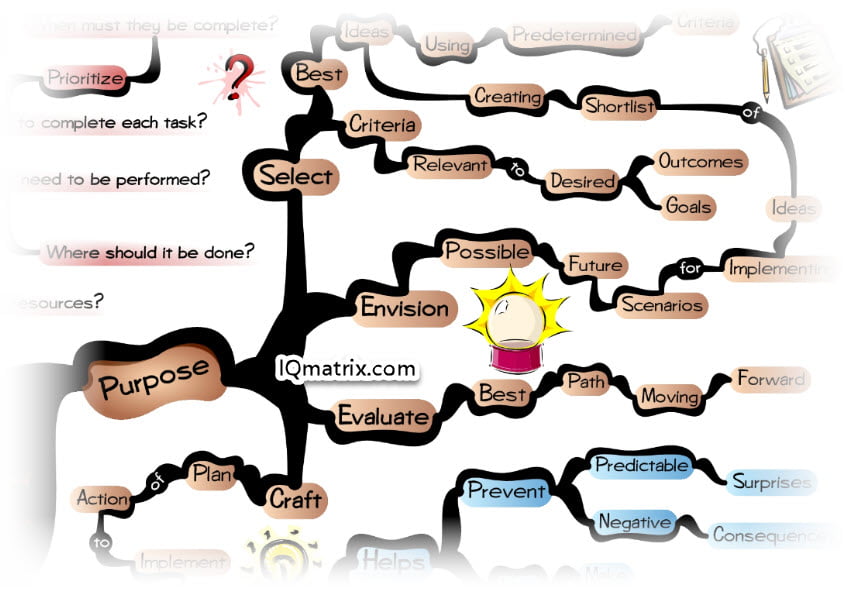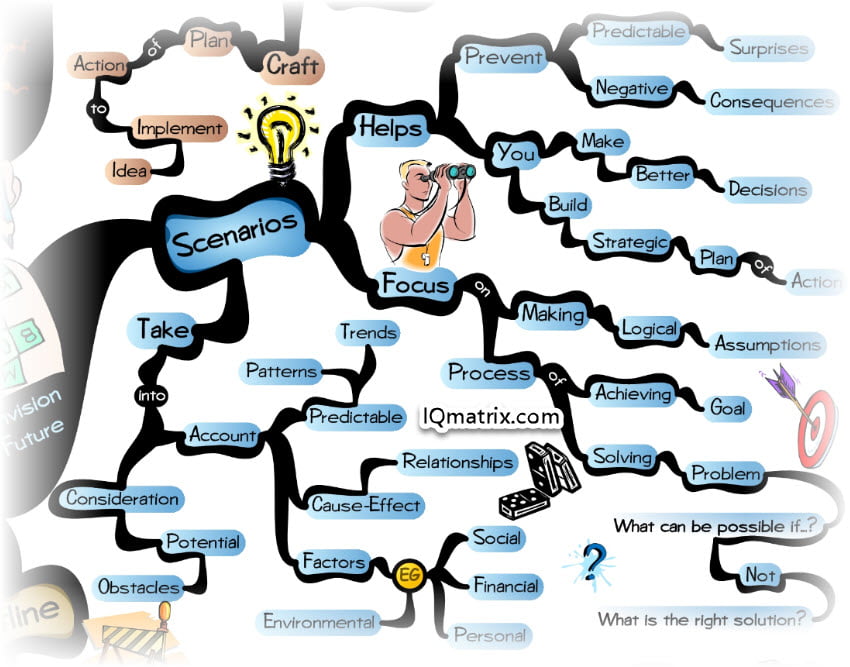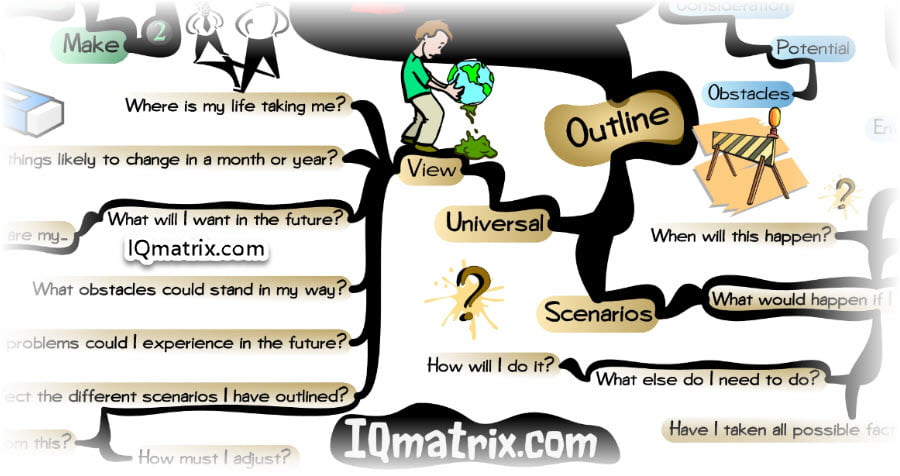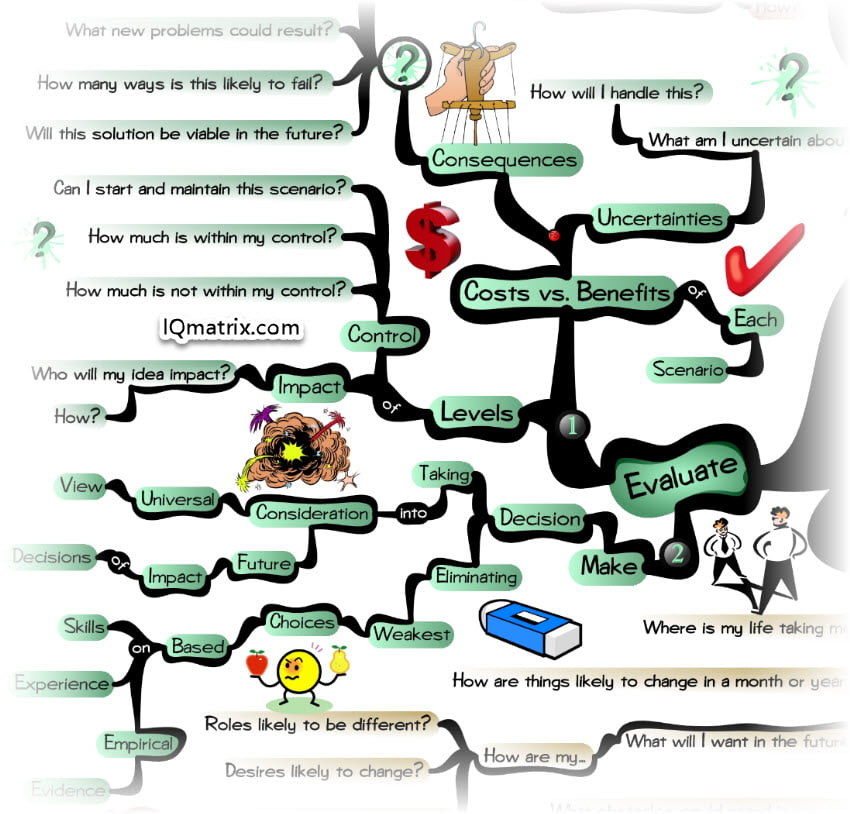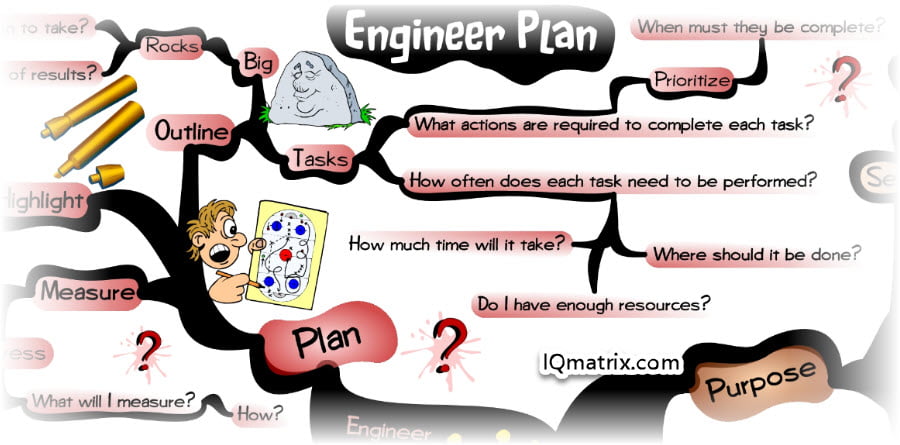Create a definite plan for carrying out your desire and begin at once, whether you ready or not, to put this plan into action. – Napoleon Hill
This is the fourth of a five-part series of articles that explores the creative problem-solving process. Each article builds on the next; taking you through a series of steps to help you solve any life or business challenge you face. Here are links to all articles within this series:
- Define Your Problem
- Investigate Your Problem
- Re-Imagine Your Idea
- Engineer Plan of Action
- Execute and Master
As you read through these articles, it is highly recommended that you have a problem in mind that you can work with. This will help you to immediately put these ideas into practice. Only in this way will you gain optimal value from this process.
The Purpose of this Step
Coming into this stage of the creative problem-solving process, you have probably generated several viable ideas that can help you overcome the problem you face. But what now? How do we take those ideas and critically examine whether or not they are actually viable solutions to your problem?
The purpose of this step is to select your very best ideas and evaluate which ones are the most likely to succeed moving forward. This process, of course, begins with envisioning possible future scenarios for implementing your ideas, and then exploring which scenarios will help you best accomplish your main objective.
This step is invaluable because it will effectively help you to select the best path moving forward. Moreover, it will provide you with all the details you need to craft a plan of action to help you implement your idea.
Envisioning Future Scenarios
Envisioning future scenarios means taking each of your ideas and mentally peering into the future to get a sense of how viable these ideas might be days, weeks, months and even years down the track.
Envisioning future scenarios in this way is valuable because it helps you see in advance possible negative consequences that may arise from the implementation of each idea.
No matter how wonderful your idea may seem on the surface, there is always a chance that you haven’t quite thought it out properly, and as a result, it may lead to some undesirable consequences in the future.
By envisioning these possible future scenarios helps you to become aware of these consequences in advance. As such you will then be better able to piece together an effective plan of action that can help you to potentially minimize these future consequences. Or you might just realize that what seems like a viable idea today may not lead to the ideal outcome tomorrow.
Now, typically it is suggested that you don’t make assumptions because assumption may lead you astray. However, in this instance, it’s actually vital that you do make some logical assumptions about how things may turn out down the track. These assumptions will effectively help you make the most optimal decisions moving forward based on these scenarios.
While taking these future scenarios into consideration it’s vital that you stay focused on the goal you are wanting to achieve. It’s so easy to get sidetracked here and lose sight of the initial goal you had in mind.
Another trap that will lead to less than optimal results is the idea of focusing on “What is the right solution?“. This is not about what’s right or what is the best solution moving forward. Envisioning future scenarios is about:
What can be possible if…?
You are in the process of solving a problem or life dilemma that is weighing on your mind. You must, therefore, stay vigilant and open-minded about all the possibilities that may result from the various decisions you make moving forward. Only in this way will you gather a 360-degree view of the possible scenarios that might lie ahead and the consequences that may result.
With this in mind, it’s crucial that you stay vigilant of potential obstacles, setbacks and other problems that may arise based on each scenario. To help you navigate through this exploration it’s vital that you take into account predictable patterns and trends, cause-effect relationships, as well as other factors pertaining to your environment, pertaining to other people, pertaining to your finances, and more.
The world works in patterns. In fact, your life and daily routine is based on a set of patterns you follow. These patterns are based on cause-effect relationships where doing one thing affects something else. Being vigilant of these patterns, relationships and trends will allow you to get a deeper sense of where your life is heading and the adjustments you might need to make to get the desired outcome you are after.
On top of this there are external factors that you will also need to take into consideration. Every idea you decide to implement will affect your life, environment and other people in some way. All this might, of course, result in a positive outcome, but it may potentially also result in some undesirable consequences. As such, it’s critical that you take everything into account while envisioning future scenarios. Only in this way will you pinpoint the most optimal path moving forward.
Let’s now explore these areas in more detail.
Outlining Future Scenarios
Taking into consideration everything we have discussed up to this point, select one of the ideas you had in mind to help you overcome your problem and run it through the following set of questions:
What specifically would happen if I made this choice? (select specific idea)
What steps would need to be taken?
What else would I need to do? How specifically will I do it?
When is the most optimal time to make this choice?
What resources might I need?
What are the potential costs in terms of time, energy and money?
What sacrifices may I potentially need to make to bring this idea to fruition?
How does this choice affect other aspects of my life?
What are some key takeaways from this understanding?
Have I taken all possible factors into account?
What else would be worth considering?
These questions should effectively help you to get a sense of the benefits, drawbacks, and consequences of each scenario/idea you have in mind. In other words, these questions should provide you with a clearer understanding of how viable an idea might be moving forward.
All this is of course all well and good, however even if a scenario seems viable at this stage it’s still very possible it could break apart down the track if it’s not aligned with your Universal View.
Outlining Your Universal View
Your Universal View is a fancy name for the visible patterns and trends that are currently ruling your life. They are based on the current choices and decisions you make that manifest your future a day, a week, a month and/or years down the track.
Getting an understanding of your Universal View will help you determine whether or not any of the scenarios you have explored are a good fit, because if they’re not, then you will either need to select an alternate course of action, or you will need to dramatically overhaul your life in order to make room for these scenarios.
In order to get a comprehensive understanding of your Universal View, ask yourself the following questions:
Where is my life currently taking me?
How are things likely to change a month or a year from now?
What will I want in the future?
How are my roles likely to change in the future?
How are my desires likely to change in the future?
How are my priorities likely to shift in the future?
What obstacles will I need to face down the track?
What possible problems could I experience in the future?
Now that you have a clearer understanding of where your life is headed, take into consideration the various scenarios you explored in the previous section and ask yourself:
How will all this affect the various scenarios I have outline?
What can I learn from this?
How must I potentially adjust things moving forward?
In order for one of your ideas to become a viable solution, it must be an ideal fit for your Universal View. If it’s not a good fit, then you have absolutely no hope in the world of bringing this idea to fruition. It just won’t work because LIFE will simply get in the way. You must therefore either choose to implement a different idea that will lead to a new set of possible scenarios, or you will need to commit yourself to making some drastic changes to your life. You simply can’t have it both ways. If you try, then you will unfortunately just get caught up in a self-sabotaging cycle that will hinder your progress.
Evaluating Your Idea
Let’s say that while outlining possible scenarios that you have settled on two or three viable solutions to your problem. It’s now time to dig a little deeper into these ideas in order to evaluate what the best case scenario moving forward might be in your specific situation.
The Costs vs. Benefits
Let’s first take a look at the consequences of implementing an idea. By “consequences”, I, of course, mean both the benefits and drawbacks of an idea. Specifically, let’s take each scenario you have outlined and run it through the following set of questions:
What are the potential benefits?
What are the potential risks associated with this?
How much am I actually willing to risk in this instance?
What am I currently uncertain about?
How will I handle these uncertainties?
What new problems could potentially arise from implementing this idea?
How many ways is it likely to fail?
Knowing what I now know, will this solution actually be viable in the future?
Many times we simply rush into implementing an idea without taking into consideration the potential difficulties and struggles that may arise. However, when you take the time to understand what may be required of you down the track, then you can make more optimal decisions moving forward.
Your Level of Control
Taking into consideration everything you have outlined above, let’s now take into account the level of control you have over each scenario.
Understanding your level of control is, of course, important because it helps you decipher whether or not you can realistically implement this idea; especially when things don’t go to plan. Ask yourself:
Can I start and maintain this scenario?
How much of this is under my direct control?
How much of this is not within my direct control?
The level of control you have over a particular scenario doesn’t always need to be a determining factor in your decision, but it’s certainly something that you must take into consideration, because typically the more control or influence you have over something the more likely you are to follow through with that idea despite any setbacks or obstacles you may face.
The Impact on Others
Along with your level of control, another key factor to consider before implementing an idea is the impact that this potential solution will have on other people in your life. Ask yourself:
How will this scenario impact other people in my life?
Will it impact them in a positive, neutral or negative way?
What are possible negative consequences that could end up causing more problems than I am ready to deal with right now?
Typically you do not live in a bubble, and as such, any decision you make will impact others. If it impacts them in a negative way then this could sabotage the progress you are trying to make. As such, it’s important to stay vigilant of the likely scenarios that could take place whenever other people are involved.
Make Your Decision
You should now have enough information about the various scenarios you outlined in order to make an optimal decision moving forward.
In order to make this decision, it’s, of course, necessary that you keep in mind your Universal View, the consequences you outlined, and the future impact that this decision/idea will have on you and on the people in your life.
Moreover, you should also keep in mind your current skills, level of experience, resources and any empirical evidence you might have that can help you successfully implement an idea.
With all these factors in mind, take time now to eliminate the weakest ideas on your shortlist and decide to work with the one idea that you feel represents the most optimal path moving forward.
Now, this, of course, doesn’t mean that you disregard all other ideas. All the other ideas you came up with are still all potentially viable options. You are not throwing them away into the trash. You are just putting them in your pocket for now. Possibly if things don’t go to plan you may very well need to go back and work with one of these ideas. They effectively become your plan B, C, D and E. 🙂
Engineering Your Plan of Action
Within a prior article, I went into a considerable amount of detail about how to develop a plan of action. As such, we won’t go into any significant detail here, however, I do want to highlight a few important areas that will be of value moving forward.
To begin with, let’s take a look at your task list.
Start by writing down all the tasks you will need to complete in order to bring this idea to fruition. Just write down anything that comes to mind without paying particular attention to order or priority.
Now take a look at this list of tasks and ask yourself:
How often does each task need to be performed?
What actions are required to complete each task?
When must each of these actions be completed?
How much time will each of these actions take?
Where should each action be completed?
Do I have all the necessary resources to complete each action successfully?
You will notice above that we turned tasks into actions. The reason for this is that tasks are very passive by nature. They are things you cross off a list. On the other hand, actions are proactive by nature. An action is something that requires you involve yourself in some way to move a task forward. Therefore most certainly list all the tasks you need to accomplish, but beside each of those tasks write out the specific actions you will take to accomplish them. Only in this way does this actually become a plan of action. 🙂
Now consider all the tasks and actions you listed and take time to identify the BIG rocks. The big rocks are your highest priority tasks/actions that will have the biggest impact on helping you achieve your goal. In some ways, you could say that the big rocks are the 20 percent of the actions you take that will get you 80 percent of your desired results. Ask yourself:
What is the most important action to take?
What 20 percent of actions will get me 80 percent of the results?
Once you have your priorities in place, you must also address the following areas:
- The resources you have at your disposal and how you will use them.
- The various roles you must play and how you will perform them.
- The responsibilities that will now be on your plate and how you will balance them.
- The deadlines you put in place for completing each task and how you will endeavor to reach them.
- The milestones that you will create along your journey to keep yourself focused and motivated.
- How you will measure the progress you make towards your goal.
- The contingency plans you have in place just in case things don’t quite go to plan.
Addressing all the above areas will ensure that your plan of action is as watertight as can be moving forward. You will of course probably never have a fully watertight plan in your hands. There will always be holes and you will probably always need to adjust to unforeseen events, scenarios, and circumstances. However, all you can do is just prepare yourself as best as possible. From there you will simply need to rely on your resourcefulness, flexibility, and ingenuity to get you through to the end.
What’s Up Next?
Having successfully outlined your plan of action, you are now ready to take massive action to implement your idea. Within the next stage (#5) of this creative problem-solving process, we are going to take a look at how to execute this plan of action to help you bring your idea to fruition.
Time to Assimilate these Concepts
Did you gain value from this article? Is it important that you know and understand this topic? Would you like to optimize how you think about this topic? Would you like a method for applying these ideas to your life?
If you answered yes to any of these questions, then I’m confident you will gain tremendous value from using the accompanying IQ Matrix for coaching or self-coaching purposes. This mind map provides you with a quick visual overview of the article you just read. The branches, interlinking ideas, and images model how the brain thinks and processes information. It’s kind of like implanting a thought into your brain – an upgrade of sorts that optimizes how you think about these concepts and ideas. 🙂
Recommended IQ Matrix Bundles
If you’re intrigued by the idea of using mind maps for self-improvement then I would like to invite you to become an IQ Matrix Member.
If you’re new to mind mapping or just want to check things out, then register for the Free 12 Month Membership Program. There you will gain access to over 90 mind maps, visual tools, and resources valued at over $500.
If, on the other hand, you want access to an ever-growing library of 100s of visual tools and resources, then check out our Premium Membership Packages. These packages provide you with the ultimate visual reference library for all your personal development needs.

